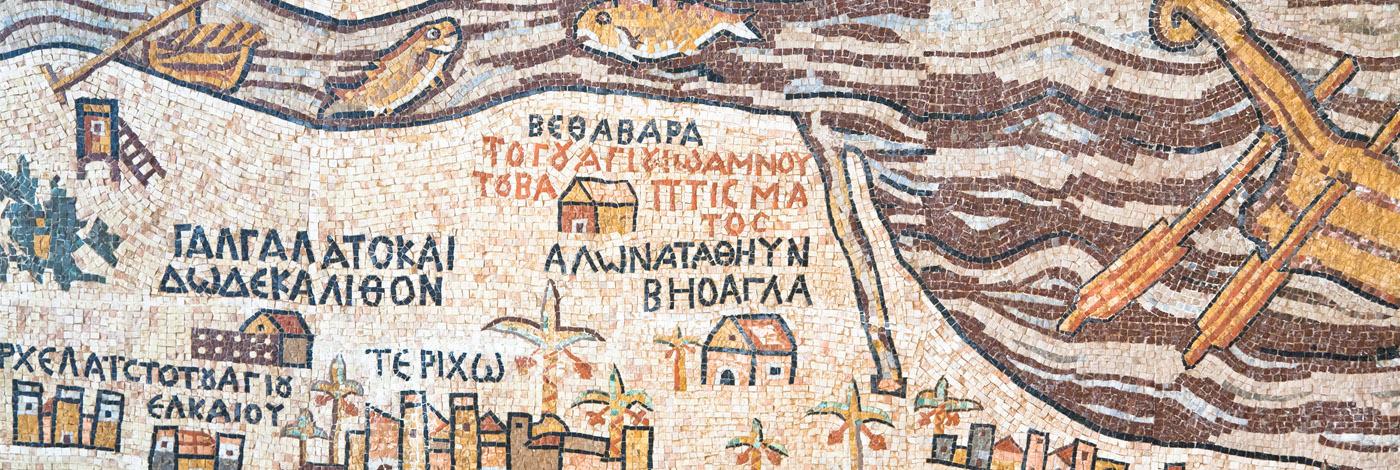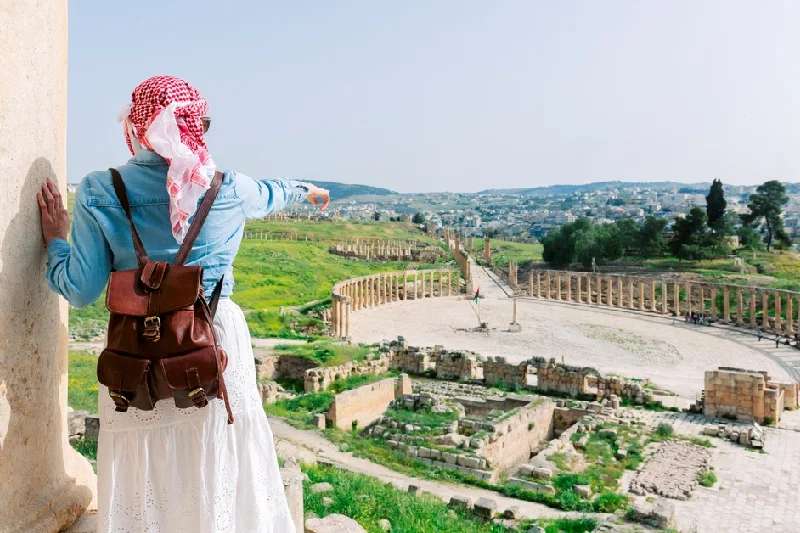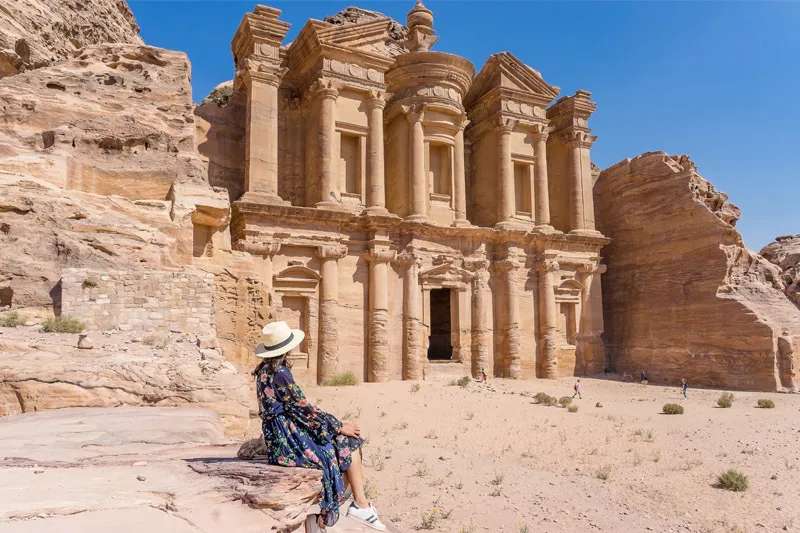
The Map of Madaba Mosaic
One of the most significant archaeological discoveries in Western Asia and one of the first examples of ancient cartography is the mosaic map of Madaba. The historical map dates to the second half of the sixth century. It was uncovered during the end of the 19th century when St. George's Church was being built on the ruins of a Byzantine church. Only around one-fourth of the original mosaic has survived. From Lebanon in the north to the Nile delta in the south and from the Mediterranean Sea to the desert in the east, the map encompassed the whole region. The primary north-south axis is formed by the Jordan Valley and the Dead Sea.
The Source of the Map
It becomes apparent that the Map is largely a documentation of Biblical geography, including the lands of the 12 Biblical tribes as well as the surrounding areas, including the whole Canaan promised to Abraham. The Basilica of the Holy Sepulchre, which was built on the rock of Calvary and over Jesus' tomb in the middle of Jerusalem, as well as the presence of New Testament locations and churches make it clear that the Map is a Christian depiction of the narrative of redemption within its physical boundaries. This therefore clarifies the usage of the Map in the Madaba church.The Madaba Map's mosaic creator(s) very certainly took inspiration from an official map picture. The Madaba Map's extended design, which spans the inside of the cathedral from north to south, must be derived from a related text. This explains the inclusion of stations like the fourth and ninth milestones, other locations without a clear relationship to the Bible, and, lastly, several vignettes without subtitles." Michael Piccirillo Despite certain point parallels with the Tabula Peutingeriana, academics have questioned whether the people who made the Madaba map could have had direct access to this late antique road map, which was preserved in a medieval copy.
How the Map was Discovered
Around 2000 Christian Arabs made the migration from Karak to Madaba, where many of their ancestors were born, in the early 1880s. They settled in the region given to them by the Ottoman authority against the objections of local tribes at the Patriarch of Jerusalem's request. After the first few years, when everyone realized they would stay in Madaba, they began to consider permanent structures for their religious and educational requirements, i.e., a church and a school. They submitted an application to the Greek Orthodox Patriarch of Jerusalem, their spiritual head. Ottoman legislation stipulated that a new church may only be built if it had previously been a church there. A colored mosaic was discovered by the immigrants in 1884 while they dug in the remains of a Byzantine church, but it was not explored. Greek mosaic inscriptions were discovered two years later, but their meaning was unknown. The Holy Synod resolved to build a church at Madaba in support of the community's desire in May 1892, and they requested the necessary approval from the authorities. The building permission was not issued until the end of September 1894, in part because of disagreements with local Bedouins. Work on the new structure started in 1894 with the excavation of a Byzantine church's foundations, under the direction of the Patriarchate's architect, Athanasios Andreakis.
What is on the Map
Calculations show that the mosaic map originally measured approximately 15.6 m by 6 m and contained 2.3 million mosaic stones. It was able to recreate the extension across the whole width of the floor using a chunk of Phoenicia found in the left side aisle of the church. In front of the third pillar of the northern pillar row is another lone piece (Galilee).
The portion of the map that can be seen extends to the Jordan Valley in the north (left) and the Nile Delta in the south (to the right, behind the pillar). One projects from the Mediterranean shore to the east while standing in front of the mosaic. Karak is in the most eastern position. Jerusalem's well-preserved cityscape is situated precisely along the primary spatial axis. The 157 extant Greek inscriptions consist of location names, Bible verses, and commentary. Territories of Israel's tribes are marked by large, bold letters in the color red. Mosaic artists employed emblems with Hellenistic-Roman roots that were popular in the Mediterranean region to identify towns and villages. Smaller settlements sometimes just consist of a single house or gates flanked by towers. Larger cities are shown from above, with some identifiable structures and colonnaded streets, and partially encircled by walls. The mosaicists also included simple to comprehend symbols for other aspects, such as path bridges across the Jordan, brown brindled bulges for mountains, and palm palms for oasis and springs.
related tours

Jordan Short Break
3 Days / 2 Nights
From
$ 346

Jordan Budget Tour
4 Days / 3 Nights
From
$ 417
